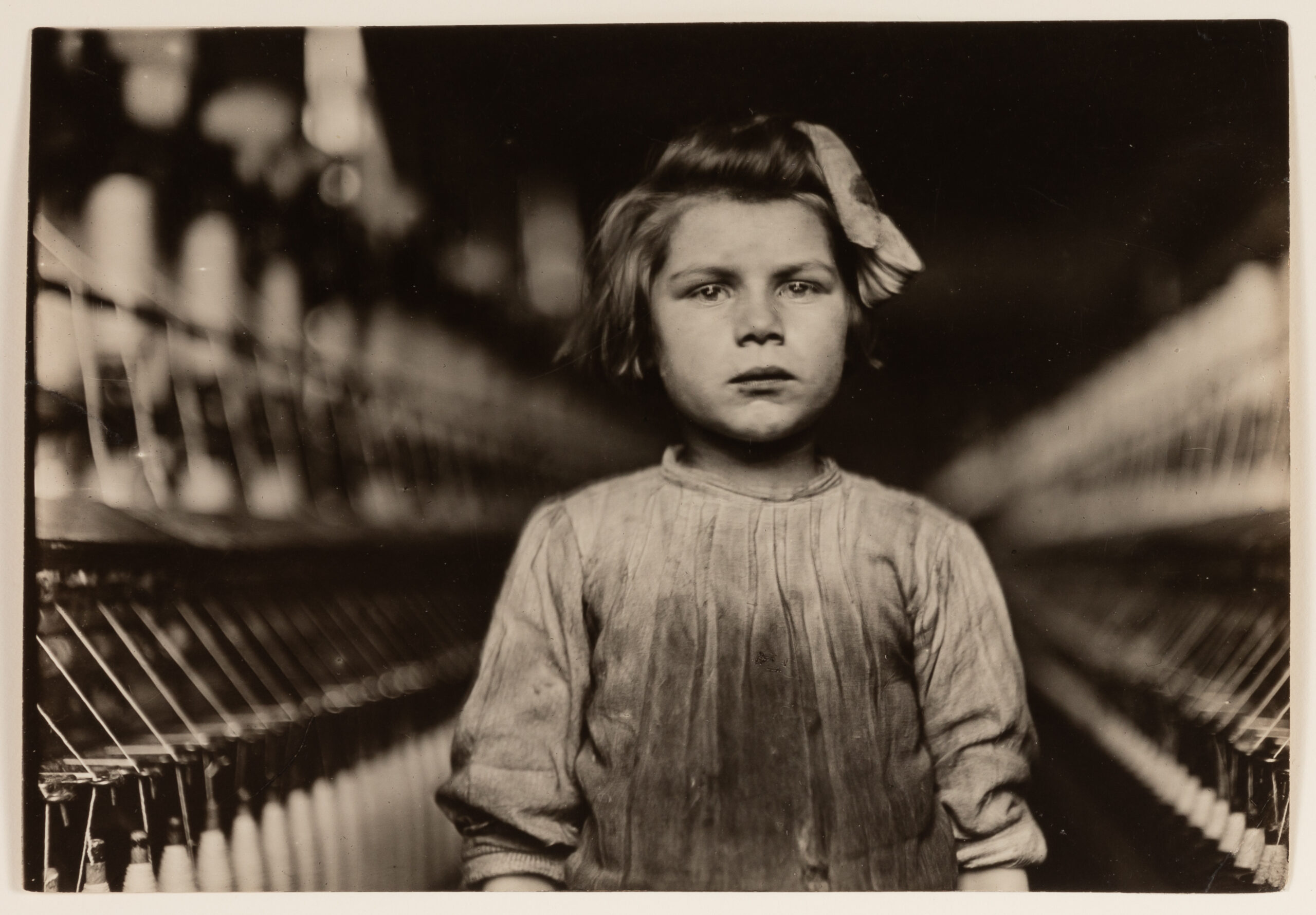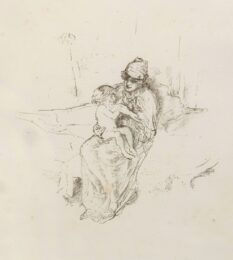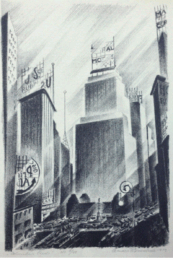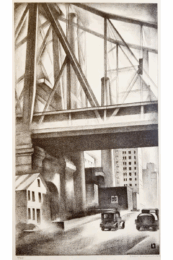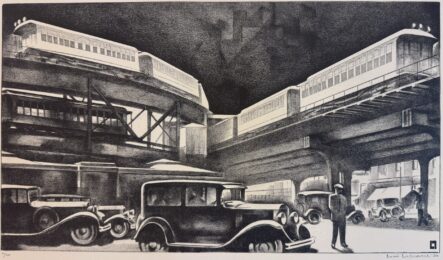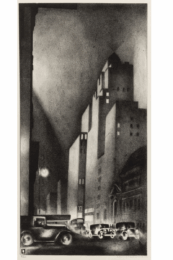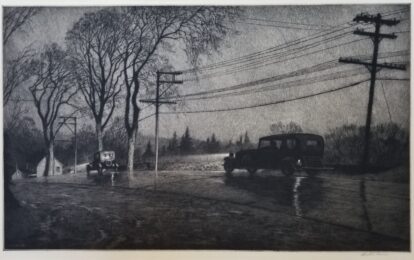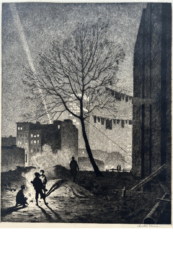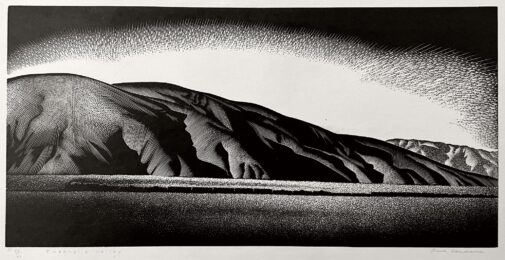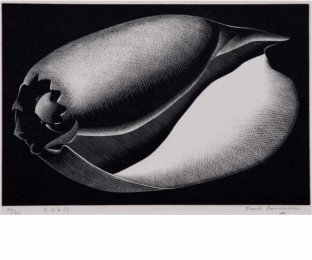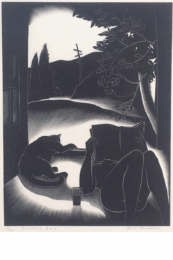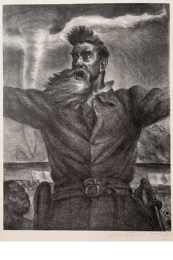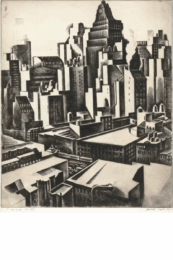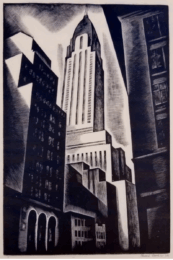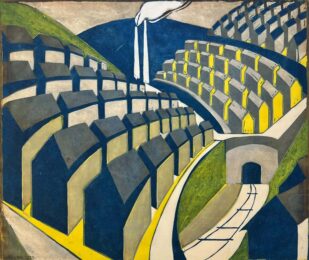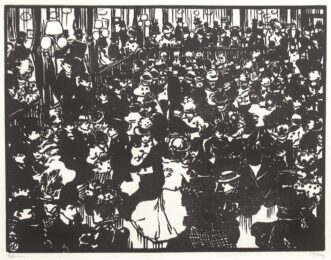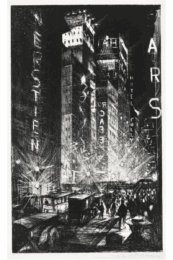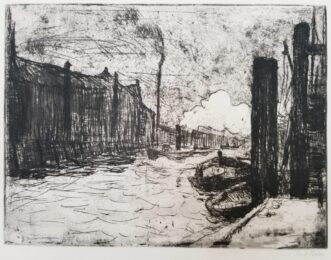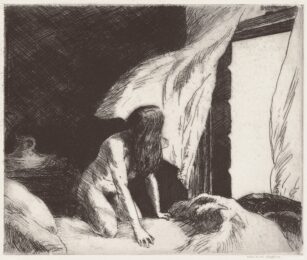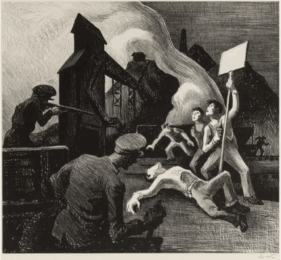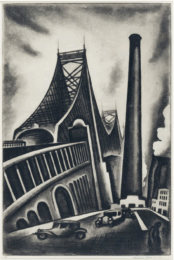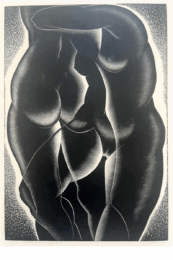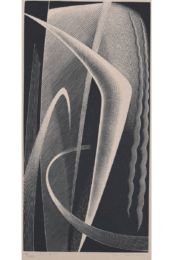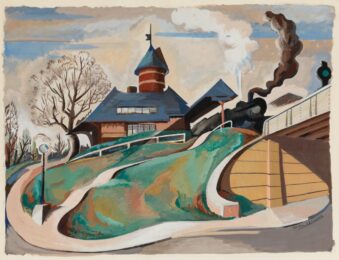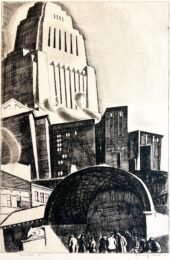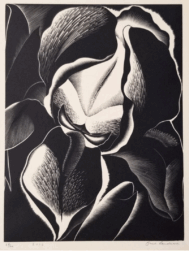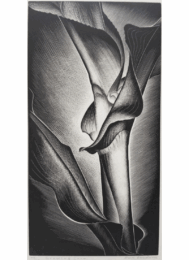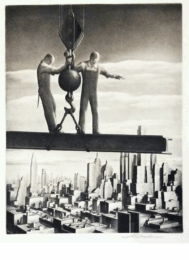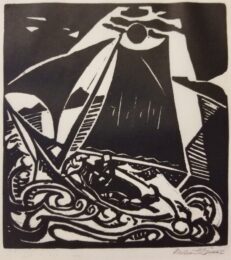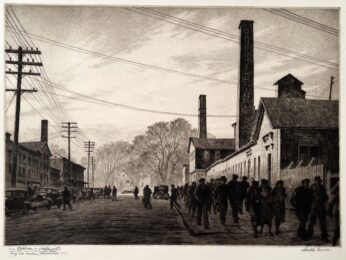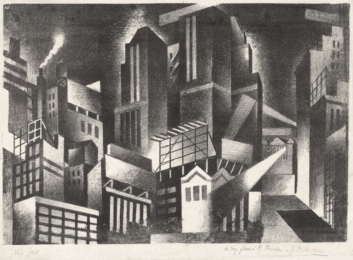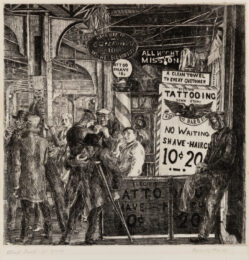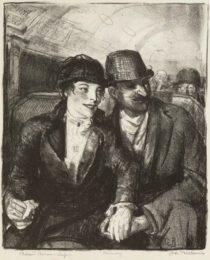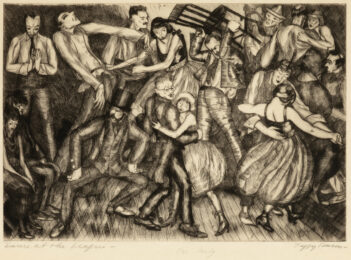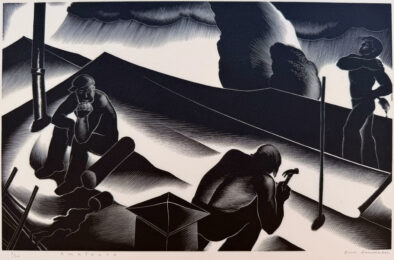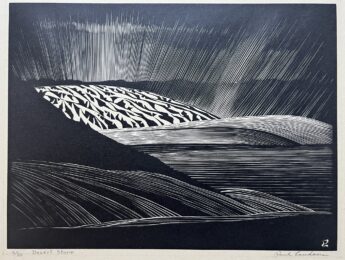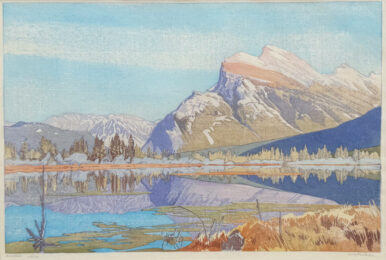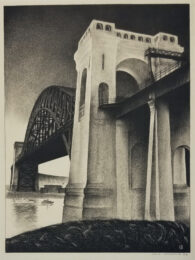Details — Click to read
Hine’s extremely rare, early silver gelatin print depicts a young girl working in Augusta’s Globe Mill in January 1909.
In 1904, the National Child Labor Committee was established by socially concerned citizens and politicians and chartered by Congress. As a freelance photographer for the Committee, Hine documented widespread violations of labor laws that protected young children. Challenging hostile managers by posing as a bible salesman, he gained entry to factories and mills, shooting children in large groups or singly.
Hine’s career as a reformer began while he was employed at the Ethical Culture School, where he taught nature study and geography, and worked part-time as the school’s staff photographer. During the period 1904-1914 his photographs addressed social issues relating to immigrant populations in New York City, child laborers in the northeast and south, and tenement family workers in Manhattan. Trained as an educator, Hine wrote eloquently about photography as a new, powerful force for societal change and also referenced it as an artistic medium. He used a 5×7-inch Graflex view camera and relied on darkroom technicians to make contact prints from his negatives. His innovative use of photographs and text, and insistence on controlling their visual presentation in social welfare journals, popular magazines, and illustrated books, position him as one of America’s premier photographers and first photojournalists.
One of Hine’s famous images of southern children laboring in mills, Spinner depicts a child with a somewhat pained but dignified expression.

